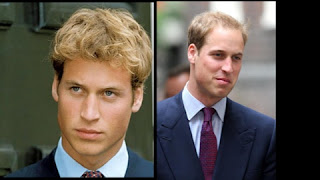What are the different Hair Loss Patterns in Women?
Hair loss is a common concern that affects women of all ages and backgrounds. Understanding the different patterns of hair loss in women is essential for proper diagnosis and treatment.
From female pattern baldness to temporary hair shedding, various factors can contribute to hair loss in women. This article delves into the diverse hair loss patterns experienced by women, exploring the causes, symptoms, and treatment options for each condition.
By gaining insight into these hair loss patterns, women can take proactive steps to maintain healthy and vibrant hair.
Introduction to Hair Loss in Women
Hair loss in women can be a distressing experience that impacts self-esteem and confidence. Understanding the reasons behind hair loss is crucial in finding effective solutions.
Understanding the Importance of Hair in Women
Hair is more than just something that grows on our heads; it plays a significant role in how women express their identity and femininity. Losing hair can be emotionally challenging for many women.
Factors Contributing to Hair Loss in Women
Various factors, including genetics, hormonal changes, stress, and medical conditions, can contribute to hair loss in women. It's essential to identify the underlying cause to determine the best course of action.
Common Types of Hair Loss Patterns in Women
Women can experience different patterns of hair loss, each with its unique characteristics and treatments.
Overview of Different Hair Loss Patterns
Hair loss patterns in women can vary from diffuse thinning to specific bald patches. Understanding these patterns can help in diagnosing the type of hair loss and planning appropriate interventions.
Comparison of Hair Loss Patterns in Women vs. Men
While both men and women can experience hair loss, the patterns and underlying causes often differ. Recognizing these distinctions is crucial in providing targeted treatment approaches.
Androgenetic Alopecia: Female Pattern Baldness
Androgenetic alopecia, commonly known as female pattern baldness, is a prevalent form of hair loss in women with distinct characteristics.
Causes and Symptoms of Androgenetic Alopecia
Hormonal imbalances and genetic predisposition are primary causes of female pattern baldness. Symptoms include gradual thinning of hair on the crown and frontal areas.
Treatment Options for Female Pattern Baldness
Treatment options for androgenetic alopecia in women may include medications, topical solutions, and hair restoration procedures. Consulting with a healthcare provider can help determine the most suitable approach.
Telogen Effluvium: Temporary Hair Shedding
Telogen effluvium is a condition characterized by temporary hair shedding, often triggered by various factors.
Triggers and Symptoms of Telogen Effluvium
Stress, illness, hormonal changes, and dietary deficiencies are common triggers of telogen effluvium. Symptoms include excessive hair fall and thinning across the scalp.
Managing and Recovering from Temporary Hair Shedding
Managing telogen effluvium involves addressing the underlying trigger, improving nutrition, and practicing stress-reducing techniques. In most cases, hair growth resumes once the underlying cause is resolved.# Alopecia Areata: Patchy Hair Loss
Understanding Alopecia Areata and Its Variants
Alopecia areata is like that friend who shows up uninvited, causing patchy hair loss that can throw you for a loop. This condition, often triggered by the immune system attacking hair follicles, can leave you with bald spots that make you want to don a chic hat as a quick fix.
Treatment Approaches for Patchy Hair Loss
When Alopecia Areata crashes your hair party, treatment options like steroid injections, topical immunotherapy, or even light therapy can help kick it out the door. Remember, hair loss is just temporary, but your fierce spirit is forever.
Traction Alopecia: Hair Loss Due to Hairstyles
Causes and Prevention of Traction Alopecia
Traction alopecia is the sneaky culprit behind hair loss caused by tight hairstyles that pull on your locks like a toddler on a toy. Those cute braids and sleek ponytails might look fire, but too much of a good thing can lead to hair loss woes.
Reversing Hair Loss from Tight Hairstyles
To reverse the damage from traction alopecia, it's time to ditch the hair-tugging styles and opt for gentler alternatives. Treat your hair like the VIP it is by giving it a break from the constant pull, and watch those strands bounce back with gratitude.
Other Less Common Hair Loss Patterns in Women
Exploring Uncommon Hair Loss Conditions in Women
Uncommon hair loss patterns in women are like the hidden gems of the hair world - rare, mysterious, and often requiring a Sherlock Holmes-level investigation to unravel. From telogen effluvium to trichotillomania, these conditions can make your mane a puzzle worth solving.
Special Considerations for Rare Hair Loss Patterns
When faced with rare hair loss patterns, seeking the advice of a savvy dermatologist or trichologist can be your ticket to cracking the code. Remember, you're not alone in this hair-raising journey, and there's always a solution waiting to be discovered.
Treatment Options for Hair Loss in Women
Medical Treatments for Various Hair Loss Patterns
When it comes to battling hair loss, medical treatments like minoxidil, finasteride, or corticosteroids can be your trusty sidekicks. Consult your healthcare provider to find the superhero treatment that suits your unique hair loss pattern.
Natural Remedies and Lifestyle Changes for Hair Loss Management
Hey, sometimes Mother Nature knows best. Embrace natural remedies like essential oils, scalp massages, or a well-balanced diet rich in hair-loving nutrients to show your locks some extra TLC.
Remember, a healthy lifestyle isn't just good for your body - it's a love letter to your hair.In conclusion, recognizing and addressing the various hair loss patterns in women is crucial for promoting hair health and overall well-being. By staying informed about the causes and treatments for different types of hair loss, women can make informed decisions to support hair growth and prevent further hair thinning.
Whether seeking medical interventions or incorporating natural remedies, there are options available to manage and potentially reverse hair loss. With proper care and attention, women can embrace their natural beauty and maintain a healthy head of hair.


Comments
Post a Comment
Leave a comment...in this very box. Or ask a question.